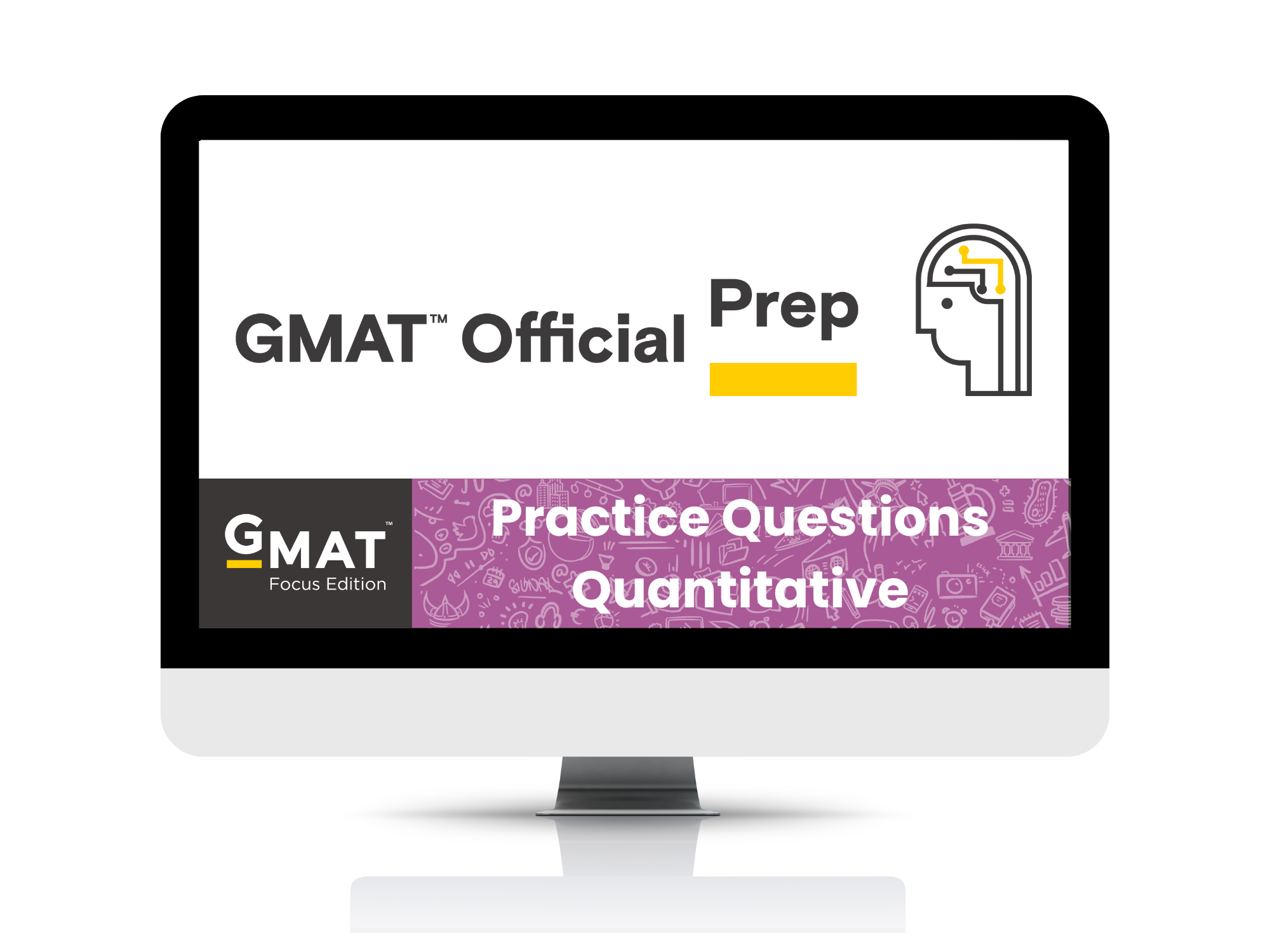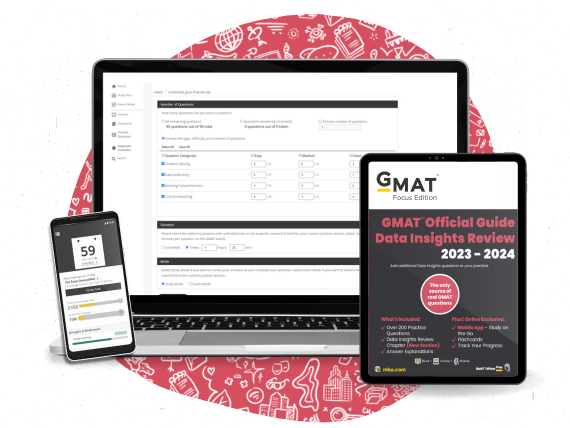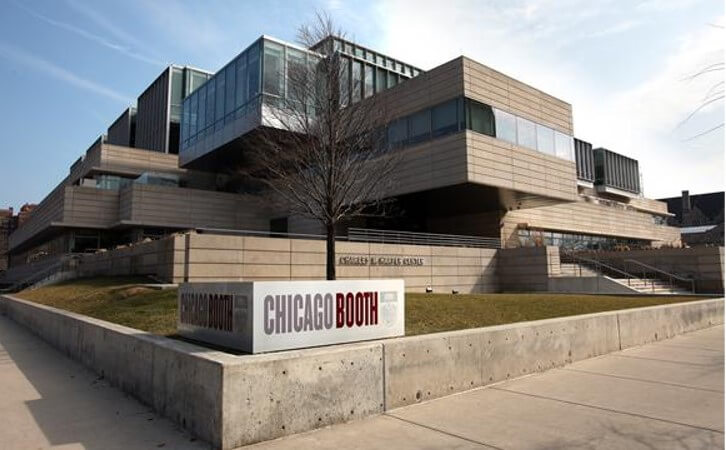If you’re looking to ace the GMAT, focusing on the Quantitative section can make a world of difference. This challenging part of the exam is designed to test your analytical skills and comprehension of fundamental mathematical principles.
- Understand the structure: The Quantitative section includes two types of questions – Problem Solving and Data Sufficiency. Knowledge about their structure and pattern will set the foundation for your preparation.
- Focus on core math concepts: The GMAT Quantitative section tests basic arithmetic, algebra, ratio and proportion, statistics, probability, combinatorics, sets, sequences and series, rate problems, cartesian plan.
- Learn problem-solving strategies: Strategic approaches to problem-solving can save you precious time during the exam.
- Data Sufficiency Techiques: In data sufficiency questions, employ the “Elimination Method” to efficiently deduce the required information. Evaluate each statement independently or in tandem, eliminating choices based on sufficiency.
- Practice regularly: One cannot overstate the importance of consistent practice to familiarize yourself with the test format, work on your speed, and build your confidence.
“Learning is not attained by chance, it must be sought for with ardor and attended to with diligence.” – Abigail Adams
Understanding the Structure of the GMAT Quantitative Section
GMAT Focus Quantitative Syllabus
1) Arithmetic:
The GMAT Quantitative Section demands a solid understanding of basic middle and high school arithmetic topics.
Number Properties – integers, primes, odd and even, fractions, decimals, ratios, percentages, and real numbers.
Direct and inverse proportions, arithmetic operations, and exponents are also essential.
Word problems based on time, speed, distance, work, profit and loss, mixing liquids, demographics, etc.
2) Algebra:
Regardless of preliminary exposure, the GMAT Quantitative section requires a solid understanding of middle and high school-level algebra. At this level, algebra typically encompasses the expression, equation, and function.|You’ll also need to understand concepts like polynomials, quadratic equations, properties of exponents, and factoring.
Indeed, the GMAT puts significant emphasis on number theory, accounting for topics such as factors, multiples, and fractions.
Solving quadratic equations, evaluating exponents, and simplifying algebraic expressions are all critical skills.
You’ll also need to understand concepts like sequences and series. Factorising expressions, solving equations through factorisation, and understanding the usage of algebraic identities will be incredibly beneficial. Additionally, the manipulation and simplification of literal equations and inequalities play a role.
3) Cartesian Plan:
“There’s no geometry on the GMAT anymore with the GMAT Focus Edition. But coordinate geometry is present in the theoretical part of the book.”
Coordinate geometry is relevant when preparing for the GMAT quantitative section, specifically in the problem-solving segment.
You can solve questions related to line intersections, slopes, distances, and coordinate points.
Typically, on the GMAT, this will involve two-dimensional space with the x and y-axis. Such problems may require determining the slope of a line, finding an equation of a line, calculating the distance between two points, or identifying the coordinates of intersection point of two lines.
4) Ratio, Proportion and Percents:
Ratios, remember they are used to compare two or more numbers. They are the simplest form of fractions that signify a relationship between different quantities.
Solving ratio problems effectively requires a good understanding of fractions, multiples, and factors. Consider sharpening your skills in simplifying complex ratios, and remember that ratios are often interchangeable with fractions.
Proportions, on the other hand, are equations that show two ratios are equivalent.
When faced with proportion problems, cross-multiplication often proves to be a reliable technique. One advanced tip—many GMAT problems are disguised rate (or work) problems, and using ratios or proportions is the most efficient way of solving them.
Percents are simply another way of expressing ratios, specifically ratios out of 100.
When dealing with percent problems, translate them into decimal or ratio format as it often simplifies the calculations.
Also, keep in mind that percent increase or decrease is a common theme in these types of problems.
5) Sets and Venn Diagrams:
A set is a collection of distinct objects, usually presented in a curly bracket, while a Venn diagram is just a visual representation of these sets, typically in the form of overlapping circles.
In the realm of GMAT, sets and Venn diagram questions could involve topics such as unions and intersections of two or more sets, subsets, and the like.
These questions test your logical reasoning skills, along with your basic arithmetic.
6) Combinatorics:
Combinatorics revolves around the arrangement, combination, and selection of elements in specific ways.
For instance, how many arrangements can be made from a given set of numbers or how many unique combinations of diverse elements can be created.
- Basics and Principles of Combinatorics
- Combinatoric Problem-Solving Techniques
- Formulas for Quick and Accurate Calculation
- GMAT Combinatoric Practice Questions
- Comprehensive Solutions
To count sets of elements without listing them, you can sometimes use this multiplication principle:
If an object will be chosen from a set of m objects, and another object will be chosen from a different set of n objects, then m x n different choices are possible.
7) Probability:
Probability questions in the GMAT’s Quantitative section is based on your ability to determine the odds of a specific event occurring out of all possible outcomes.
As an example, consider the following question:
‘What is the probability of drawing an ace from a standard 52-card deck?’
The probability is calculated by dividing the favourable outcomes by the total number of possibilities.
In this case, there are 4 aces (favourable outcome) and 52 cards in total (total possibilities), so the chances are 4/52.
In a GMAT context, the probability questions might not always be so straightforward. You may often find yourself dealing with a set of conditions, rather than a fixed number of outcomes.
However, the basic principles remain intact; you need to focus on the favourable outcomes and the total possibilities to calculate the chances.
8) Work Problems:
These questions often involve scenarios where two or more entities are working together to complete a task.
Simply put, the ‘rate’ is a measure of the speed at which a task is completed.
The idea here is to find the time taken to finish a task if you know the speed of work and vice versa.
The basic formula is Work = Rate x Time.
In the context of the GMAT, rate work problems typically involve two entities working together, with varying rates, to complete a common task.
John takes 5 hours to mow a lawn, while Jane takes 7 hours to complete the same task. If they work together, how long will it take them to mow the lawn?
John’s rate of work is 1/5 of the lawn per hour, and Jane’s rate is 1/7. When they work together, their combined rate is 1/5 + 1/7 = 12/35 of the lawn per hour.
Therefore, working together, it will take them 35/12 hours.
9) Distance, Speed, Time Problems:
Distance = Speed x Time.
This simple equation is the cornerstone of all distance, speed, and time questions.
But remember, the GMAT isn’t testing your ability to simply memorize formulas, it’s assessing your capacity to understand, manipulate and apply these formulas in different situations.
A bicycle rider travels 60 miles at an average speed of 20 miles per hour. If the return trip takes twice the time, what was the average speed on the entire trip?
10) Series and Sequences:
The term sequence refers to a set of numbers arranged in a specific order, where each number is a term. For instance, take a sequence like 3, 5, 7, 9, and 11. Here, each number is termed, and the sequence is linear as each term increases by two.
On the other hand, a series refers to the sum of these terms. In the same sequence above, the series would be 3 + 5 + 7 + 9 + 11.
- Arithmetic Sequences and Series: These sequences display a consistent increase or decrease between terms. The difference between any two consecutive terms remains constant.
- Geometric Sequences and Series: In these sequences, the ratio of any two consecutive terms remains the same.
11) Statistics:
Statistics concepts can significantly boost your quantitative section score and overall GMAT performance.
A few of these concepts and how you can approach them with confidence:
- Mean, Median, and Mode: These are measures of central tendency in a data set. The mean is the average, the median is the middle value, and the mode is the most frequently occurring value.
- Variance and Standard Deviation: These are used to measure the dispersion in a data set. Variance is the average of the squared differences from the Mean, while the Standard deviation is the square root of Variance.
- Probability: This is the likelihood of an event happening. It’s crucial to be comfortable calculating probabilities, as well as understanding the rules of probabilities.
- Combinations and Permutations: These deal with counting and ordering numbers. GMAT questions often require knowledge of both concepts.
12) Data Sufficiency:
In the GMAT Quantitative section, you’ll encounter a distinctive question format known as Data Sufficiency. This format is specifically designed to assess your ability to analyze a quantitative problem, identify important information, and determine if you have enough data to solve the problem, thereby reflecting the data-driven decision-making process often required in business.
The structure of a Data Sufficiency question follows a standard format. Every question begins with a stem, setting up the main problem or condition be. This to met is immediately two followed by statements, each offering information that may (or may not) be necessary to answer the question. You are to determine whether each statement, independently of the other, provides enough information to answer the question.
Each Data Sufficiency problem presents a question along with two statements (labeled (1) and (2)) containing specific data.
By leveraging mathematical principles and general knowledge, determine if the given data are adequate to answer the question. Then, select one of the answer choices based on sufficiency.
A) Statement (1) ALONE is sufficient, but statement (2) alone is not sufficient.
B) Statement (2) ALONE is sufficient, but statement (1) alone is not sufficient.
C) BOTH statements TOGETHER are sufficient, but NEITHER statement ALONE is sufficient.
D) EACH statement ALONE is sufficient.
E) Statements (1) and (2) TOGETHER are NOT sufficient.
Mastering the Art of Time Management
Mastering the art of time management is essential when preparing for the GMAT Quantitative section.
With 21 problem-solving questions to be answered in just 45 minutes, every second counts.
How can you excel under such demanding circumstances?
The key lies in balance; maintaining a steady pace, but also ensuring you don’t rush and make careless mistakes. Implement a thoughtful approach to every question, spending the right amount of time on each one. You’ll find that with practice, this becomes second nature.
Make sure you’re not only understanding and solving the problems correctly but also keeping an eye on the clock. That’s where the power of practice comes into play.
Under timed conditions, you’ll get a feel for how long you should spend on each type of question. This not only helps in avoiding rushing but also allows you to build up a cushion of time to spend on more complex problems.
Focus on mental math and strategic problem-solving approaches. These will save you time you might spend on complex calculations, and give you those precious extra minutes for the hardest tasks.
Be sure to review information presented in graphs, charts, and tables efficiently; this data often provides key insights to solve the problems.
Remember, it’s not just about answering as many questions as possible—it’s also about answering them correctly.
So be strategic, be smart, and keep practicing until time management becomes a second skin. Do this, and you’re well on your way to mastering the GMAT Quantitative section.
Importance of the Right Study Materials
“Success in the GMAT’s Quantitative section is not all about raw mathematical skill but also lies in understanding the question patterns and knowing the best strategies.”
Choosing the right study materials for the GMAT Quantitative section can be the difference between a satisfactory and an exceptional score. When you use top-quality resources, you’re able to practice in a way that mimics the actual test set-up, bridging the gap between your current skills and the intricate demands of the GMAT.
Such materials promote conceptual clarity, making it easier for you to interpret questions and solve them efficiently. They break down complex problems into manageable parts and offer step-by-step methods for tackling them.
Experts often recommend materials like the Official Guide for GMAT Review and the GMAT Focus Online Quantitative Diagnostic Tool. Both are designed by the creators of the GMAT and offer real retired questions from past tests.
The role of the right study materials in your GMAT preparation journey cannot be overstated. They help bring the test to you long before you sit to take it, effectively preparing you by simulating the challenge you’re about to face.

Demystifying Data Sufficiency Questions
Let’s explore Data Sufficiency questions, a key component of the GMAT Quantitative section. These questions are like unique puzzles designed to test your logic and math application skills, rather than just your ability to compute.
Data Sufficiency questions have a unique structure. They present a question and two statements. Your job isn’t to answer the question or solve the problem, but to decide if the statements provide enough information to do so. This may seem simple, but be warned – it’s trickier than it looks.
For these questions, it’s essential to remember: consider each statement independently, unless the instructions say otherwise. Don’t jump to conclusions by combining the information upfront. Instead, take your time to analyze each piece of data individually.
Successfully answering Data Sufficiency questions requires a solid understanding of math fundamentals, and a sharp attention to detail. You could be tested on a range of math concepts, from algebra and arithmetic to combinatorics and statistics. Knowledge of these areas will be your greatest asset.
Practicing these questions is vital. You’ll get better as you become more familiar with their structure and potential hurdles. With time and practice, not only will you answer correctly, but more swiftly too. Practice, learn from your mistakes, and watch your progress improve.
Developing a Study Schedule for Quantitative Success
Embracing the GMAT Study Habit
It’s crucial that your study schedule aligns with your lifestyle. This requires balancing work, family time, and other personal commitments. Most importantly, ensure the schedule does not get overwhelming. You need a routine so adaptable, you commit to it effortlessly, while keeping burnout at bay.
The Importance of Consistent and Focused Study Sessions
Consistency is undoubtedly the key to your success in the GMAT Quantitative section. It’s recommended that you study at least a few hours each day, rather than packing in long study sessions once or twice a week. Your brain needs time to incorporate new information, so frequent short study sessions are far more efficient than sporadic marathons.
Analyzing Your Strengths and Weaknesses
Before painting your study calendar, it’s crucial to accurately gauge your strengths and weaknesses. The GMAT Quantitative section includes two types of questions: data sufficiency and problem solving. Emphasize on the areas you find challenging. For example, if data sufficiency questions prove difficult for you, commit extra hours to practice these.
Allocating Time for Each Topic
Once you’ve recognized where your strengths and weaknesses lie, it’s time to allocate specific hours to each topic. More complex areas might require more time, so planning and flexibility are key for a successful study schedule. For instance, if you struggle with problem-solving questions, consider dedicating additional time mastering techniques for these.
Incorporating Practice Tests into Your Study Schedule
Practice tests should be an integral part of your study plan. Not only do they help you familiarize yourself with the test format, but they also enable you to gauge your preparedness and pinpoint areas you may need to focus on.
Tapering Your Study Schedule as the Exam Approaches
As you inch closer to your exam date, it’s beneficial to taper your study schedule. This includes reducing the amount of new information you’re absorbing, instead shifting focus to reviewing the concepts you’ve already studied. This helps your brain consolidate the information while reducing last-minute stress.
Keep it Flexible
Remember, developing an effective GMAT study schedule isn’t about rigidity but flexibility. This means adapting and revising the routine as necessary, based on your progress and confidence in different subjects. Always remember, you’re not only preparing for a test, but also, laying the foundation for your future business school success.
The Power of Practice Tests
Diving headfirst into the GMAT Quantitative test without knowing what to expect may yield undesirable results. Conversely, gearing up with firm practice allows you to be better equipped. Gleaning from the concept of ‘practice makes perfect,’ practice tests emerge as a vital part of your GMAT Quantitative section preparation strategy.
Imagine walking into the test center, completely familiar with the exam format, question types and knowing what strategies to employ to answer the questions efficiently. Sounds like a dream, right? However, that’s precisely what well-structured practice tests offer.
Think of these tests as a mirror, giving you a clear reflection of your quantitative abilities, both strengths and areas needing improvement. Your performance on these exams helps to point out which quant topics are more challenging for you. Armed with this information, you can then focus your study time on these particular areas to refresh your math skills.
Besides highlighting your weak points, practice tests are instrumental in exposing you to the broader variety of question types. By attempting diverse problems, you are better positioned to think quickly and solve effectively on the actual test day.
An additional advantage of practice tests is the simulation of real test settings. Unlike casual practice sessions, timed tests help you get acclimated to the intensity and time constraints you’ll face during the actual test. This practical exposure helps you to build resilience and adapt to the pace required to answer all the questions within the stipulated time.
To sum it up, practice tests provide the foundation for every GMAT Quantitative section success story. Adopt them, and you’ll be creating an informed, strategic, and efficient plan to score highly in your GMAT.
Understanding GMAT Exam Day Procedures
You’re just a few steps away from your GMAT Focus test, no doubt one of the most challenging yet rewarding parts of the test. Let’s take a closer look at the procedures you should anticipate on the day of your GMAT exam. Familiarizing yourself with these can minimize stress and ensure optimal performance. Remember, mental readiness is key to acing the GMAT!
Firstly, ensure you carry valid identification, an essential requirement for the GMAT examination. This must contain your photograph and signature, such as your passport. Double-check your appointment time and location. Arriving late could mean forfeiture of your exam, so it’s prudent to arrive at least 30 minutes early to settle in and calm your nerves.
Understanding the Test Center Rules
Knowledge of test center rules is vital to prevent any surprises on test day. You may not carry items like mobile phones, notebooks, or watches into the testing room. In fact, almost everything – except your ID and the key to your locker – is prohibited. You’ll have a locker provided to stow your belongings safely.
You should also get used to the electronic notepad and marker provided for notes and calculations. It may take some adjustment if you’re accustomed to traditional paper and pencil. Remember, everything you write will be erased after the test, so count this solely as a tool for solving problems, not for noting insights you wish to remember later.
Your Comfort is Important
Next, think about comfort. The testing room may be cold, so dress in layered clothing to adjust easily to the temperature. You can take short, timed breaks during the exam but remember, the clock keeps ticking. To save precious time, consider bringing a snack or a quick drink to the testing center to rejuvenate you during these intervals.
Last but not least, take a deep breath. This is the moment you’ve been preparing for. The understanding of exam day procedures is as much part of your preparation as tackling the quantitative problems. Remember, each question is a step towards your dream business school, and you’re well-prepared to take that step.
Last Minute Tips for GMAT Quantitative Success
Here are some last-minute tips that could make the difference between a good score and a great one.
Breathe
Yes, it might sound trivial but it’s important. Taking deep breaths helps reduce stress and enhances your focus. With a calm mind, you’re more likely to understand complex problems better and make less mistakes.
Recall Your Strategies
You’ve been practicing and preparing for this exam for a while. Now, take a moment to recall all the strategies you’ve learned. The plugging in answers approach, the elimination of wrong choices, the rapid solving techniques – let them all be at the forefront of your mind.
Trust Your Preparation
No matter what, trust your preparation. You’ve prepared for this exam with all your might. Believe in your understanding of algebra, geometry and arithmetic. Trust your ability to solve data sufficiency and problem-solving questions. Confidence can be a key factor in giving your best performance.
Stay Positive And Keep Going
Remember that everyone faces difficult questions on the GMAT Quantitative section. Instead of getting stuck on one, mark it and move on. You can always come back to it later, if time allows. Keeping a positive attitude and continuing to tackle problems will carry you through the test.
Manage Your Time
Keep an eye on the clock. It’s better to make an educated guess on a difficult question and keep the momentum going than to spend most of your time on a single problem. Remember, every question is weighed equally.
Good luck! You’ve got this!
Marcelo Ambrozio Ramos and the Quantitative Department of MBA House
Proficiency in the GMAT Quantitative section requires the guidance of experts who have an intimate understanding of what it takes to excel. Marcelo Ambrozio Ramos and the Quantitative Department of MBA House stand out in this regard. To ensure their students excel in the quantitative section of GMAT, they employ personalized teaching methods that cater to the unique needs of each individual.
Marcelo Ambrozio Ramos, a seasoned professional in GMAT tutoring, holds the mantle in the Quantitative department. With a wealth of experience under his belt, his expertise includes but is not limited to basic algebra, probability, and arithmetic. He takes pride in breaking down intricate mathematical concepts into digestible chunks, helping students grasp the fundamentals and build a strong foundation for tackling both problem-solving and data sufficiency questions.
The Quantitative Department of MBA House, guided by Ramos, adopts an intensive but balanced study schedule. They firmly believe in the power of practice tests, and thus, embed them strategically throughout the course. Not only that, they analyze student’s performances to identify strengths and weaknesses, providing targeted guidance to optimize study sessions. This department’s relentless commitment significantly contributes to their student’s success stories, painting them as a beacon of excellence in GMAT tutoring.
In essence, the blend of Marcelo Ambrozio Ramos’ unique tutoring style and the strategic study approach adopted by the Quantitative Department of MBA House set their students on the path to GMAT quantitative success.





